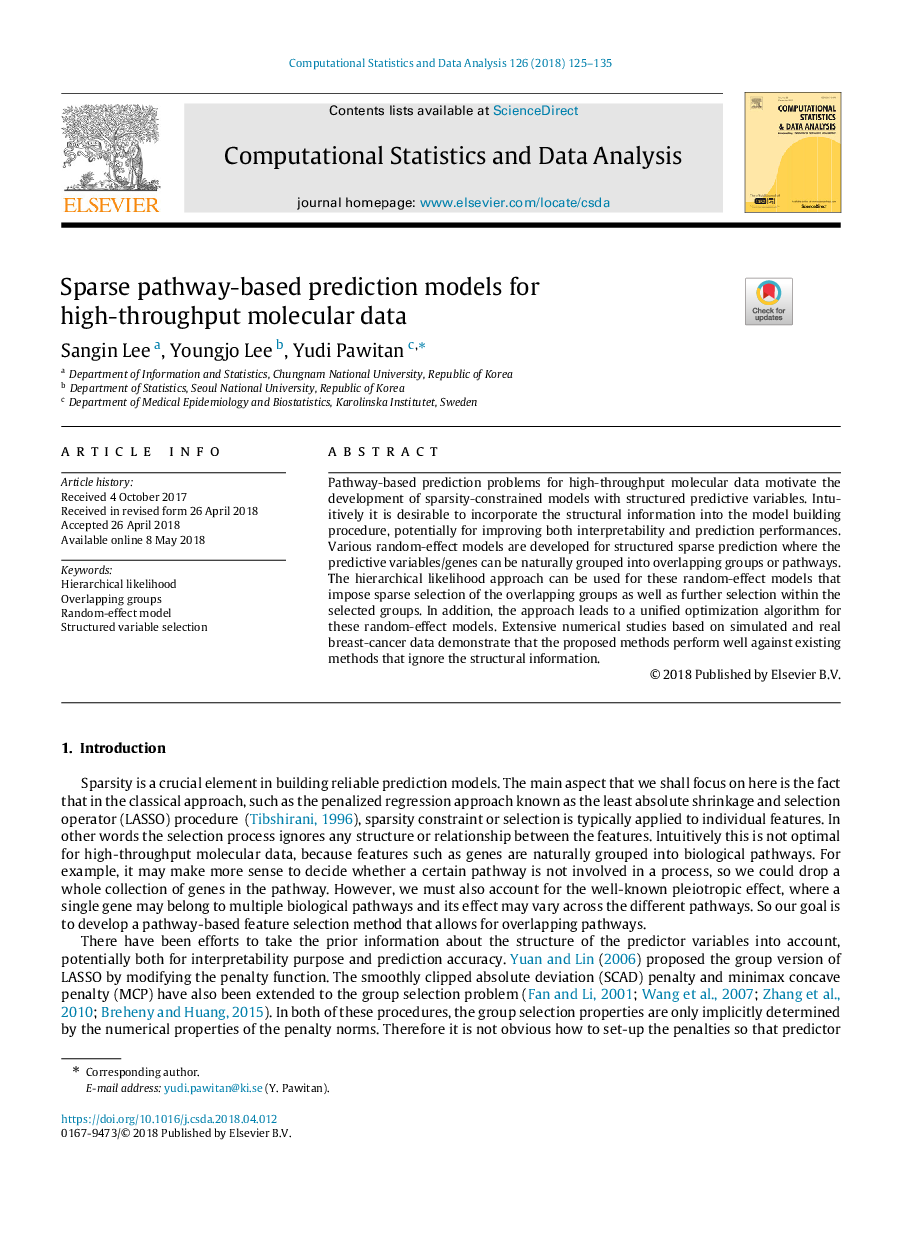| Article ID | Journal | Published Year | Pages | File Type |
|---|---|---|---|---|
| 6868657 | Computational Statistics & Data Analysis | 2018 | 11 Pages |
Abstract
Pathway-based prediction problems for high-throughput molecular data motivate the development of sparsity-constrained models with structured predictive variables. Intuitively it is desirable to incorporate the structural information into the model building procedure, potentially for improving both interpretability and prediction performances. Various random-effect models are developed for structured sparse prediction where the predictive variables/genes can be naturally grouped into overlapping groups or pathways. The hierarchical likelihood approach can be used for these random-effect models that impose sparse selection of the overlapping groups as well as further selection within the selected groups. In addition, the approach leads to a unified optimization algorithm for these random-effect models. Extensive numerical studies based on simulated and real breast-cancer data demonstrate that the proposed methods perform well against existing methods that ignore the structural information.
Related Topics
Physical Sciences and Engineering
Computer Science
Computational Theory and Mathematics
Authors
Sangin Lee, Youngjo Lee, Yudi Pawitan,
